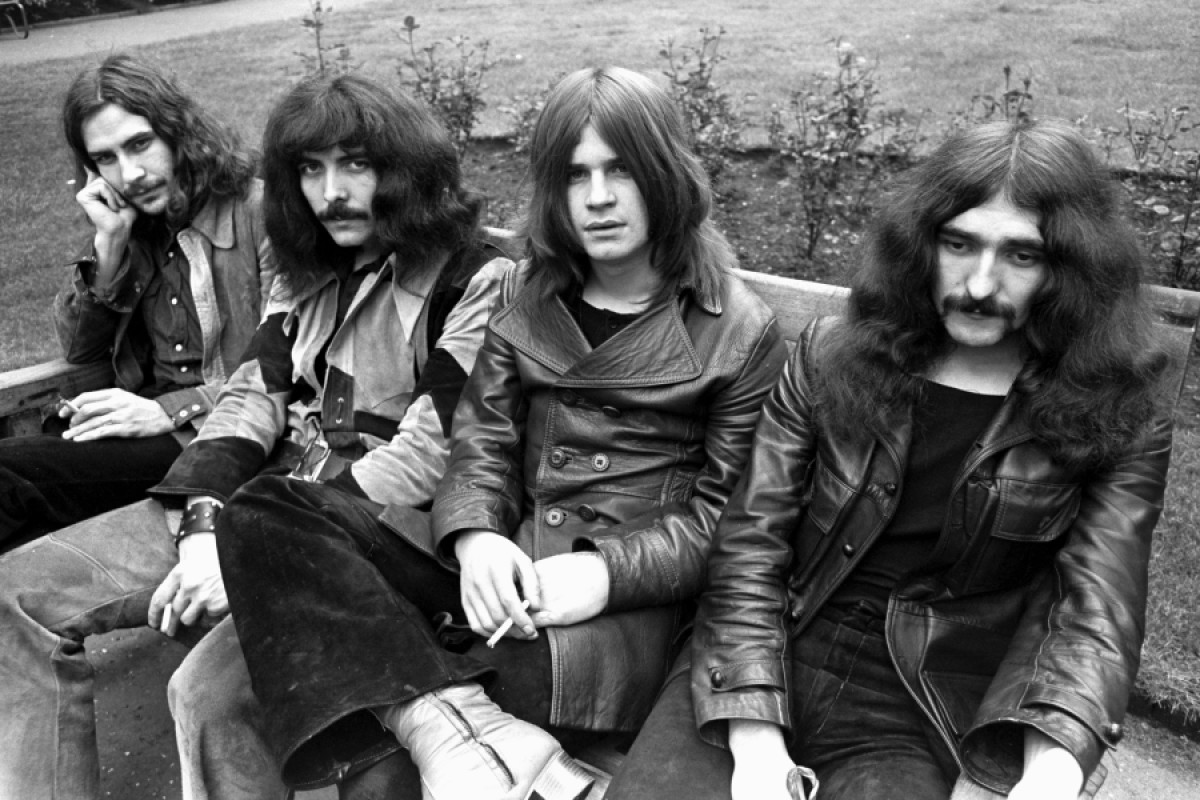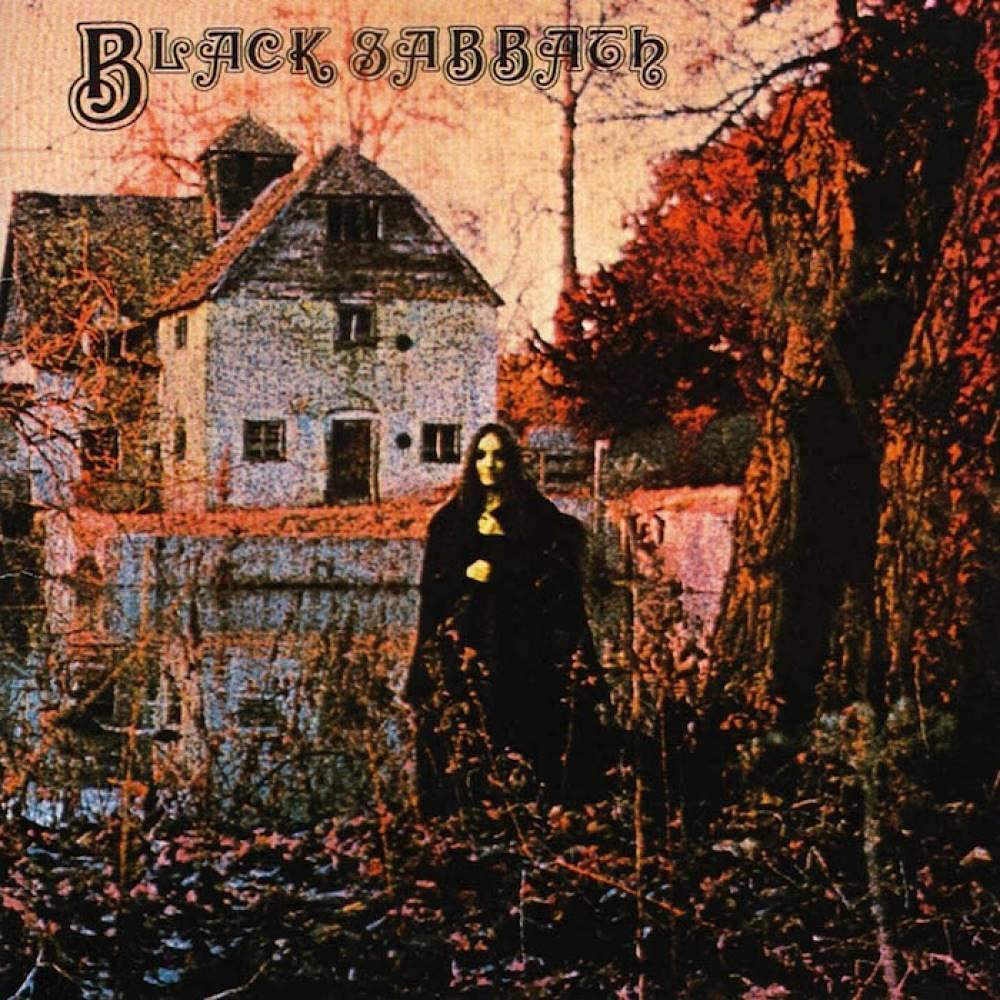Always the 1970, still the damn 1970, still that famous, chaotic and artistically incredible year. It happened so much in the world of music that every time to tell you about a record of that period, to contextualize it, you would have to make a premise of a page. I will spare you this time and I will tell you only that on 13 February 1970 a debut album was released in England that would have invented a musical genre where before there was nothing but blues, rock or folk. Heavy metal was born and his parents called themselves Black Sabbath with their eponymous record. We are in Aston, a small red brick village near the industrial town of Birmingham, England, it is the second half of the ’60s and in the young English the musical ferment is very strong, Swinging London is a strong magnet and the talents that blossom in those years or that anyway try the road of life on the road are countless, there are also Toni Iommi, left-handed guitarist who will become one of the most influential in history, and drummer Bill Ward. They have a band (the Mithology) but they find in a record store an announcement of a local singer (that great times those ads on the bulletin boards, ed) such Ozzy Zig who was looking for a group with which to start a collaboration. Here the first seed was planted so together with John “Ozzy” Osbourne (the famous Zig) to the voice, which then Iommi discovered to know since school, and with the addition of two musicians brought by Ozzy and that is the guitarists Terence “Geezer” Butler and Jimmy Philips founded the band. After refining the line-up with the addition of a saxophonist, Alan Clarke, the group that initially took the bizarre name of Polka Tulk Blues Band or more briefly Polka Tulk, began performing in various venues in the area performing covers of popular artists such as Jimi Hendrix, Cream and the Beatles. The group tapered (Clarke and Philips left the band for reasons never specified) and changed the name to Earth, specializing in a blues from the folk mold, much loved in Northern Europe and in 1968 he recorded a small demo that was a huge success in the pub circuit of the United Kingdom and thanks to their manager Jim Simpson was also heard in Germany, a nation always attentive to the English musical novelties of those years. We were preparing for an emotional tsunami that would upset the world of music, not only English. So far they were appreciated yes, but not for originality, because theirs was a pretty standard blues and full of covers. The spark (obviously not the only one) that changed the game in the mind of the 4 was the fact that the name had to be changed because there was already a band called that way and here there are many stories related to the choice of: Black Sabbath. Certainly there was a role in the horror film “Le Tre Facce della Paura” of 1963 by Mario Bava, which was broadcast in England under the title of The Black Sabbath. Another certainty is Geezer Butler’s passion for the occult and black magic (in the manner of Jimmy Page of Led Zeppelin), who said he had a nightmare of a presence one night and thought of the song of the same name. What we know has been told in 100 different ways, but the fact is that the 4 chose the name Black Sabbath, you know the audience loves to be afraid and horror movies in the cinema always had huge rows. There is a “but” at the origin of the band, in 1968, which risked never to give birth to the first album and everything that followed, namely Ian Anderson, charismatic leader of the already famous Jethro Tull. He wanted the young guitarist phenomenon Toni Iommi for his band. Toni went to London at Intertel Studios in Wembley and participated for 4 days in a series of concerts and performances together with Jethro Tull, the Who, the Rolling Stones and the supergroup Dirty Mac (that just to name the components shake my hands : Mick Jagger and John Lennon on vocals, Eric Clapton on guitar, Hendrix‘s drummer Mitch Mitchell and heard Keith Richards on bass). A performance of this magnitude, imagine, was broadcast only 28 years later because of Jagger’s complaints about the performance of the aforementioned super group. Incredible and even more incredible was Toni Iommi’s subsequent refusal to become a full member of Tull. He wanted his own band and his band was Earth. Soon they would become Black Sabbath, just before signing their first contract with Fontana Records, later Vertigo, and just before entering the recording studios Regent Studios in London to give their first effort to print. All this was confirmed during a short promotional tour in Denmark (as did many other famous colleagues) where Iommi saw the queues at a cinema that projected as we said horror films and wondered why if people paid to be frightened by images, He couldn’t do it for notes. The return of Iommi was also a decisive push for the whole band. The left-handed man had brought from his experience a professional vision of the music business and the recording that followed was fast and profitable : 12 hours at the cost of almost $900, then the success was one of the best music business ever seen, like the debut of Led Zeppelin a year before. Time was money and the work of the musician, especially at the beginning and if he wanted to break through, it was seen as a real work you started at 9 and you went out until you had finished or at least finished something. The album was released Friday, February 13, 1970 (obviously Friday, February 13) and had a success almost immediately as was the immediate crushing of the critics, but to that as for Led Zeppelin, we must, alas, get used to. Already from the gloomy cover, a mill of the English countryside with a model in the center dressed in black, it was clear that the work was not ordinary and that the band was preparing to amaze the world. Actually the author of the cover, the designer Keef, wanted something more daring and sexy (revealed that the model in question was ready to pose naked since it had nothing underneath) but then he thought of doing something more relevant to the gloomy and gloomy atmosphere that he wanted to create. Let’s imagine the dismay of those who, bought the record, had put it for the first time on the turntable expecting that rock-tinged blues but had in the melody a strong base, a bit like it happened for Deep Purple or the Zeppelin themselves, instead facing a dark and sinister noise of rain, thunder and bells and the beginning of the title track. The first real heavy metal song in the history of music, not only for the slow and gloomy pace of guitar and bass, but also and above all for the hallucinatory and narrating voice of Ozzy Osbourne, who described dark rituals inspired by black magic and horror movies. If you then add that Toni Iommi performed the famous Devil’s Triad (a three-tone G, D flat and D) and that is an extremely dissonant and trilling musical escalation that in the ancient Middle Ages was also called “Diabolus in musica”, here you will have the birth from scratch of a new genre. All this then became a cliché of heavy metal bands, ie the insistence of these dark themes and these demonic lyrics, which caused harsh criticism of Satanism and occultism by the well-thinking, but also sparked even more interest of young people. The album continues with The Wizard and its wonderful intro of harmonica and a blues of folk influence also this very intense, but less dark than the previous song, with a very fat riff that will be one of the most loved songs of this record. Behind The Wall Of Sleep reveals to the world Iommi’s talent, his riffs and his technique embroider a wonderful mid-tempo that will inspire thousands of bands. The song, however, was conceived and written by Butler who narrated that he dreamed of it and after waking up to remember it perfectly and immediately put on paper to propose it to the band. In those years everything was possible. The next one became one of the most famous, but also one of the most criticized. N.I.B. begins with a bass turn that will become famous, but the is the text that will make much discussion with his references to Lucifer. Critics argued that there was a clear message addressed to young people to initiate them to Satanism and the cryptic name of the song helped to keep an aura of mystery that still attracted the listener. Nativity In Black, this was said to be the sinister meaning of the acronym while in reality NIB was the nickname given to drummer Ward by the band because of the pointed goatee. The next Evil Woman did not dampen the cursed aura of the album but was a cover of a Minneapolis band, the Crow, who released it in 1969, a song with a blues soul in which Ozzy’s malevolent voice and Butler’s magnetic bass were the spearhead. Iommi’s solo was splendid, short, but sharp. As a single it was not very successful, but it was a very captivating piece. The acoustic and delirious intro of the subsequent Sleeping Village, with the help of a thought-crusher played by the brilliant producer Rodger Bain, leaves room for a powerful and gloomy guitar riff that takes up the atmosphere of the title-track and leaves room for the magic guitar of Toni Iommi who then will take the stage with Butler, in the last track Warning. A song with very little singing, but with a lot of guitar, in the style of the jam sessions so famous in those prolific years. A dark blues, yes, but also jazz, to show off their crystalline talent. Successful operation: the long 10-minute suite is the worthy conclusion of a record that invented a genre, created something that was not there before, gave a black and demonic soul to British blues rock, It started a successful line that in the ’80s exploded definitively with the American groups of the Bay Area, but this is another long story. A debut that entered the history of music from the main door and that projected Black Sabbath in the Olympus of rock. In the ’70s, even after the release in September of the second exceptional album Paranoid, he made them become the second most requested bandwagon after Led Zeppelin: stories of drugs, alcohol and sex that literally went around the world, a bit like the extravagances of his frontman Ozzy Osbourne. Craziness that led him to leave the band in the late 70’s, after a decline obviously facilitated by the abuse of an exaggerated life. The fact remains that even as a soloist the good Ozzy stood out as a great artist and that Sabbath even without him managed to stay on the crest of the wave, then reunited in recent years with the singer coming up to the farewell concert in Birmingham (a circle had closed) on February 4, 2017, 47 years later. A record that must be counted among the most important and influential in the history of music and that we absolutely recommend to rediscover. I was lucky enough to find an original vinyl copy of the 70s in the fantastic London market in Camden, but you will also need a banal mp3 to appreciate the beginning of heavy metal, between rain and death bells.
Good listening,
Trex Willer
(you can find original italian article at this link : https://www.trexroads.com/black-sabbath-black-sabbath-1970/ )



